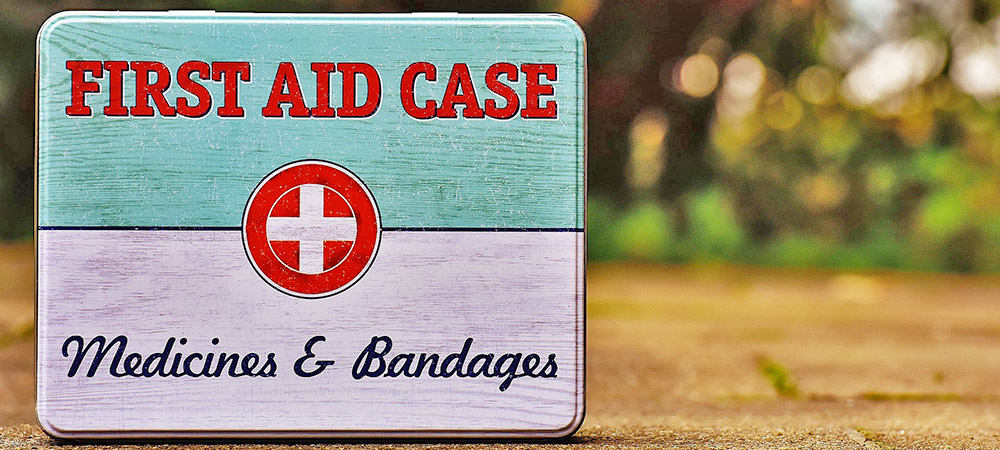Epinephrine Auto-Injectors for Outsiders

When I volunteered at a camp, a 7-year-old gave me her backpack and she went to play with the other kids in bouncy houses and on playgrounds. This backpack held the daunting EpiPen, and I felt a lot of pressure, holding this lifesaving responsibility on my back. If the unfortunate situation of an allergic reaction occurred, I would have no clue what to do with the EpiPen, and that was the scariest part.
Reflecting back on this situation and the severity of allergies – hers being extremely serious and life threatening – I wanted to arm myself with tools to be as prepared as possible. I might not be a camp counselor again, but I am sure to be around allergic people. Becky Nelson, RN, BSN, and Graded Oral Food Challenge coordinator at Allergy Associates of La Crosse explains epinephrine auto-injectors for outsiders – those who aren’t directly related to those with a severe allergy.
Auto Injector Basics
To start, epinephrine is to be administered when a person experiences anaphylactic symptoms. These symptoms occur after a person is exposed to their offending allergen, can range from person to person, and can affect numerous areas of the body.
Becky says that you should administer the epinephrine as soon as any of these symptoms, or a combination of them, are apparent. She explains, “If they experience any facial swelling, swelling in the lips, difficulty breathing, any wheezing, or any coughing, for example. It’s better to use it than not to use it.” If you’re questioning whether to administer the epinephrine or not, you should administer it. It’s better to be safe than sorry.
Now – the scary part – actually administering it. Stay calm and read the directions on the auto-injector itself. While there are several different brands, each will have their specific directions on the label. The drug will administer itself, all you have to do is inject it into the outer thigh of the allergic person, and hold for about 10 seconds. It will puncture through clothes if necessary.
Becky explains that one brand of epinephrine, called Auvi-Q, will actually give directions out loud. “With Auvi-Q, an automated voice will tell you, step by step, what to do. So, it shouldn’t be so scary. It’s very easy to use,” she says.
After injected, epinephrine, the drug itself, works throughout the body and can decrease swelling, increase blood pressure, open airways, and stop the reaction from progressing. While this can help immediately, it’s very important to call 911 and to be evaluated after a reaction. In the meantime, Becky says, “Make sure their airway is open and clear and sit with them. When they use an auto-injector, it can be scary. It feels like you have an overwhelming sensation of heat and then your heart will race.” Keep yourself calm and be there for the allergic individual.
Tips for auto injectors
For those who are prescribed epinephrine for their allergic conditions, Becky also has a few tips.
The most important piece of advice is to keep it with you always. “You should carry a purse or fanny pack and you should have an auto-injector on you at all times. Especially if you’re attending camps, family reunions, school activities; there are so many different foods and pollen is so high, too. Exercise and other activities can also enhance the potential for a reaction,” she explains.
A recent study discussed the use of epinephrine with those highly allergic patients who should have it with them at all times. Only half of respondents reported being within 5 minutes of their auto injector at all times, and fewer than 44% carry it with them always. Even if you’re sure you won’t have a reaction, it’s imperative to have it with you. Accidents do happen.
It’s also important to keep the auto-injector at room temperature. While it may be convenient to keep it in your car, excess heat or cold can affect the strength of the epinephrine. Keep it with you, and keep it at a moderate temperature.
For many patients using sublingual immunotherapy under the La Crosse Method™ Protocol, epinephrine prescriptions may not be required, however it is the patient’s and provider’s decision based on patient history or risk. Those who have a history of anaphylaxis or other life-threatening reactions will typically have epinephrine available in case of allergen exposure. Because the La Crosse Method is optimized for each patient based on their specific level of sensitivity for each problem allergen, reactions are minimized, and once tolerance is built, reactions from accidental exposure are typically less severe.
For more safety information from Allergychoices about allergy drops following the La Crosse Method Protocol, check out details here.

